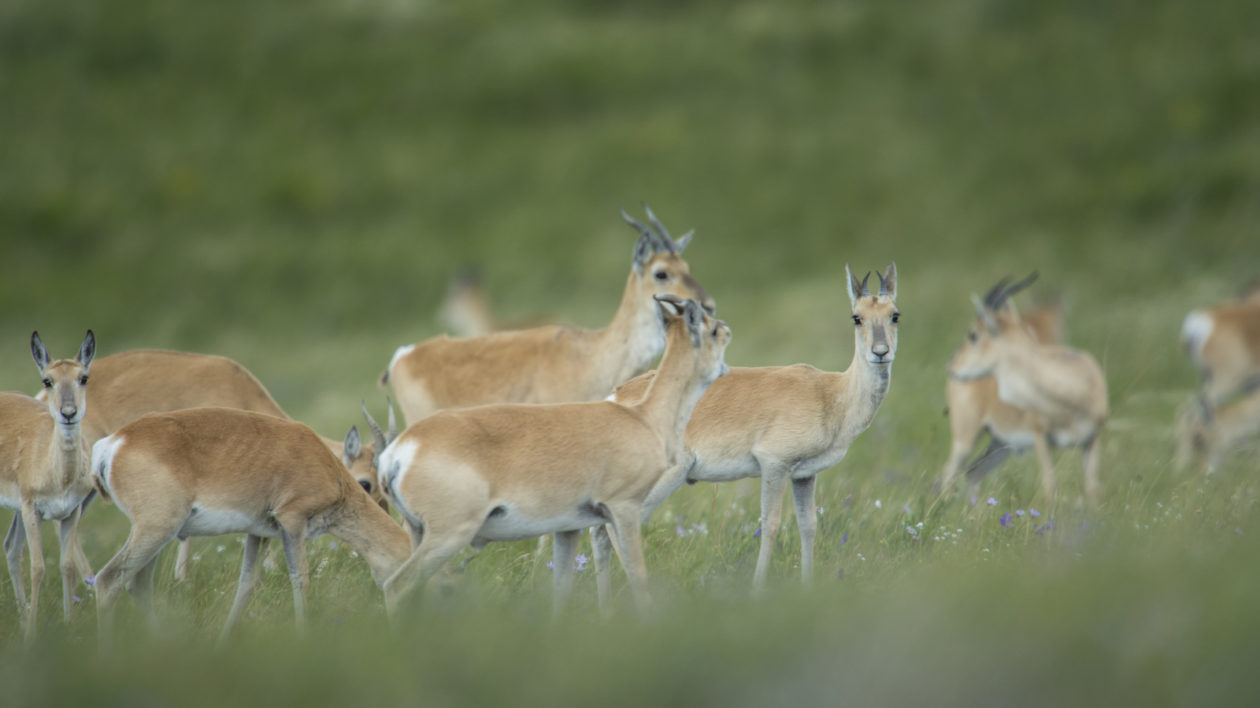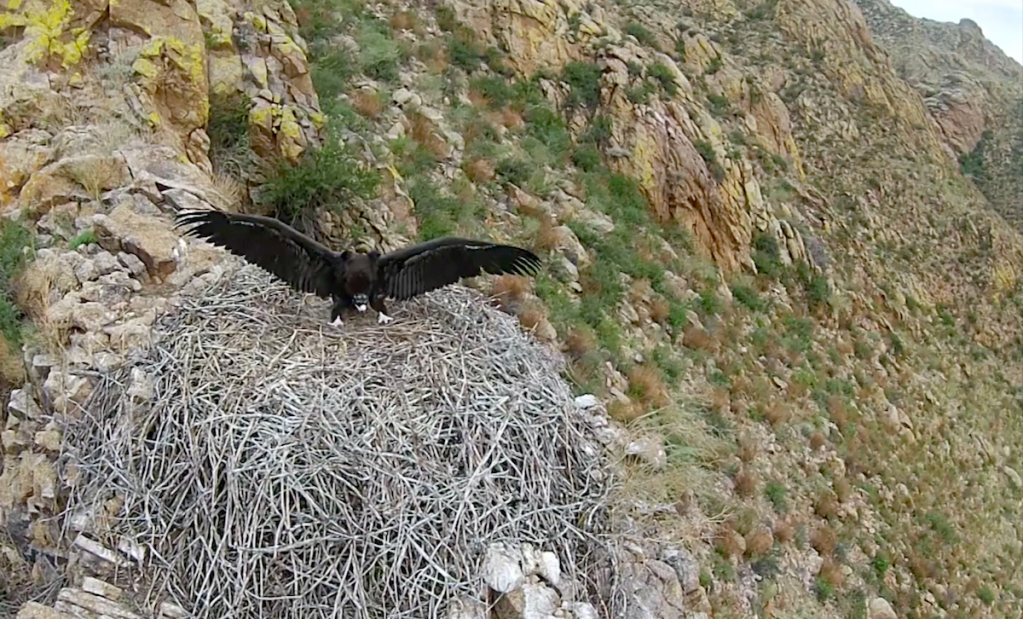Checking up on the world’s largest vulture isn’t easy — they inhabit rugged mountains in one of the most remote areas of the world. But that may change thanks to unmanned aerial vehicles, or drones, which Conservancy scientists are testing as a new tool to monitor Cinereous Vulture populations in Mongolia’s Kherlen Toono Uul Nature Reserve.
Gazelles, Grasslands and Raptors
With a 3-meter wingspan, the Cinereous Vulture (Aegypius monachus) is the largest vulture in the world. These massive birds have characteristic bare heads and glossy, black-brown plumage. Also known as Eurasian Black Vultures, the species inhabits southern Europe, the Middle East, and throughout Asia, where the majority of the population is found. Cinereous Vultures are classified by the IUCN as Near Threatened, as scientists are observing widespread population decline, likely linked to declining numbers of wild ungulates and domestic livestock throughout Asia.
In Mongolia, Cinereous Vultures cruise across the Eastern Steppe — the world’s largest remaining temperate grassland — where nomadic herders have tended livestock since before the rise of Genghis Khan.
“Raptors are at the top of the food chain and they help balance the whole ecosystem,” says Tuguldur (Tuugii) Enkhtsetseg, a conservation biologist with The Nature Conservancy’s Mongolia program. He explains that with the collapse of the grey wolf populations, Cinereous Vultures are one of the few remaining scavengers and play a critical role in consuming dead animals and reducing incidents of wildlife disease.
The vultures are closely tied to the nomadic Mongolian gazelle, which roam the steppe in large herds looking for fresh pasture. Vultures travel from the Gobi Desert to follow the herds, feasting on animals that die along the way. The vultures then continue their migration eastward into China and Korea.
Given the Cinereous Vulture’s key role in this ecosystem and close relationship with the gazelle, Enkhtsetseg wanted to assess the health of the vulture population at Kherlen Toono Uul Nature Reserve, a 4,460 hectare protected area recently established by the Mongolian government with the help of the Conservancy.

Deploying the Drones
In July 2015, Enkhtsetseg used a DJI Phantom 2 Vision + drone to survey for raptor nests amid Kherlen Toono’s granite outcroppings, where the young vultures were about to fledge and leave the nest. In one week he located 33 raptor nests, seven of which were active that nesting season. That nesting density is healthy, but a bit lower than other surrounding protected areas.
“We found that drones are a very effective way of monitoring the raptor nests,” says Enkhtsetseg. Traversing the rugged granite outcrops to check all 33 nests on foot would take Enkhtsetseg about a week. But with the drone he can survey them all in just two days, saving considerable time and dangerous climbs.
Next summer, Enkhtsetseg plans to fly the drone twice: first in March, when the vultures are laying their eggs, and again in July. The two data points will allow him to estimate breeding success of the Kherlen Toono population.
Enkhtsetseg also hopes to expand beyond simply monitoring nesting success to understand how vulture feeding sites and gazelle migrations are connected. He organized a partnership between the Conservancy, the Denver Zoo, and nine other organizations to begin a long-term study of gazelle in Toson Hulstai, a second nature reserve the Conservancy helped establish in 2008. Last July they captured 10 gazelles and fitted them with satellite transmitters that will map their migratory route across the grasslands.
Enkhtsetseg’s goal is to secure funding to collar vultures, too, and map how closely their migratory route follows the gazelle. “We are trying to understand how the Mongolian gazelle calving sites overlap with vulture feeding sites for their summer range,” he says. “If we can capture and fit vultures with GPS transmitter, it would help us to clarify these questions.”




Join the Discussion